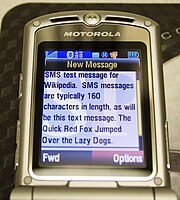 It consists of the words RELIGIOUS TOME perforated with a number of holes. The answer is “The holy bible”.
It consists of the words RELIGIOUS TOME perforated with a number of holes. The answer is “The holy bible”.It depends, then, on the homophony of hole-y (full of holes) and holy (sacred). But they are not homophones for the many speakers in England who use a special allophone [ɒʊ] for /əʊ/ before morpheme-final /l/. (These are the people for whom a goalie, where the /l/ is morpheme-final, doesn’t really rhyme with slowly, where it is morpheme-initial.) I think everyone probably pronounces hole-y identically with wholly. In both the /l/ is treated as morpheme-final. But in holy it isn’t.
I discussed this in my blog of 31 July 2006, and will repeat here what I wrote then.
I recounted how, when I was a small boy and couldn’t sleep one night, my father told me the Bible story of Moses and the burning bush (Exodus 3).
In the words of the Authorized Version, God spake unto Moses from out of the midst of the bush and said, “Draw not nigh hither: put off thy shoes from off thy feet, for the place whereon thou standest is holy ground”.
But I heard this as hole-y ground, ground with holes in it. (If Moses kept his shoes on, I thought, perhaps he would get them caught in the holes.)
This implies that my late father pronounced [ˈhəʊli] holy ‘sacred’ and [ˈhəʊli] hole-y ‘containing holes’ identically — like me, and unlike the speakers mentioned above.


















